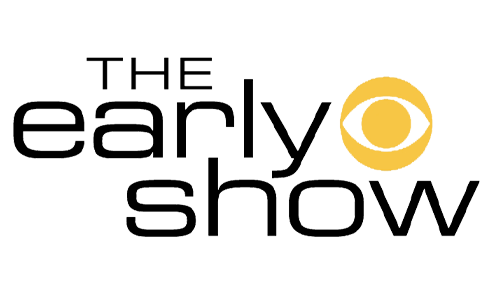January 20, 2021
In this podcast, Dr. Hotze discusses the symptoms of yeast overgrowth and his natural solution to fight yeast so that you can regain your health. Learn about an amazing support program, Yeast-Free With Me, that can help guide you along the yeast-free eating program with emails, tips, recipes and more!
1:21: …the first and most important thing to do when you take charge of your health is take charge of your eating program, your eating plan.
2:15: …we recommend starting your New Year, and really anytime of the year, with a yeast-free eating program. We call our program, here in the first week of January, we call it Yeast Free With Me.
3:43: By the way, yeast is like fungus, it’s in the fungus family. Yeast produces toxins that adversely affect our health.
5:23: You may not realize this, but your body is full of bacteria, you’re covered with bacteria. Your staph epidermidis, from the top of your head to the tip of your toe, trillions of staphylococcus bacteria on your body.
6:39: As a matter of fact, in the United States, something like a hundred million antibiotic prescriptions (are prescribed) every year. That’s a lot of antibiotics.
7:24: When you take an antibiotic, that antibiotic is meant to kill the abnormal, unhealthy bacteria in your body. Unfortunately, the antibiotics also kill good healthy bacteria.
8:25: Yeast produces toxins. Literally, over a hundred different toxins, and these would be mycotoxins, that means mold toxins. Yeast is in the mold family and the fungus family, so it produces these toxins that are then absorbed into the system, and get in your bloodstream, and they depress the immune system and make it weak.
9:24: …what does yeast grow on? It grows on sugar.
11:40: To have a healthy immune system, you have to have a healthy colon, your intestinal tract has to be healthy.
11:50: If you’ve ever taken antibiotics, you have an overgrowth of yeast in your system. What we do is, that’s when we go to a yeast-free eating program, and by yeast-free, I mean that we eliminate those simple carbohydrates and sugar products that cause the yeast to grow.
13:21: When you’re on the yeast-free program, you eliminate altogether yeast, all the sugar products, and products that convert to sugar.
14:08: By the way, people can become allergic to yeast. When they have yeast in their system, they can literally…if they have an allergic disorder, they can become allergic to the yeast, and their body, which causes these hosts of symptoms to develop.
Stacey: Welcome to Dr. Hotze’s Wellness Revolution. I’m Stacey Bandfield, here with Dr. Steven Hotze, founder of the Hotze Health & Wellness Center. So glad to have you join us today. Just as a reminder, you can always download our podcasts at hotzepodcast.com. That’s H-O-T-Z-E podcast.com.
Well, it’s going to be a new year, or maybe it is a new year, depending on when you’re watching this. And so we have…it’s a tradition now, annual tradition that we have, Yeast Free With Me. This is a great time to hit the reset button. I think everyone is pretty much ready for that, aren’t they, Dr. Hotze?
Dr. Hotze: Well, we’re going to find out, are you ready? I’m Dr. Steven Hotze, and I’m glad to be with you today. I believe that you need a doctor and a staff of professionals who can coach you on a path of health and wellness, naturally, so as you mature, you have energy, you have vitality, and you’re enthusiastic about life, right?
Stacey: Just like Dr. Hotze, yes.
Dr. Hotze: Right, this is the way you want to be. It’s a new year, why shouldn’t we go into this new year enthusiastically? And that’s what we want to encourage you to do, to be enthusiastic, you have to take charge of your health, and the first and most important thing to do when you take charge of your health is take charge of your eating program, your eating plan. That’s the most important thing you can do in the New Year. We have a program here that we do every year. It’s a…
Stacey: Yeast Free With Me.
Dr. Hotze: It’s the Yeast Free With Me, but it’s a recurring program. We do it…it rolls around on the first of every year. It’s called the yeast-free eating program. We have a book that goes with it, my Optimal Eating Program, Dr. Hotze’s Optimal Eating Program. It’s a beautiful book with some great, great recipes that’ll help you adopt a healthy-eating lifestyle, which is, I mentioned to you, is the foundation of all good health.
Now, today I want to talk about yeast, and what causes yeast problems and why we recommend starting your New Year, and really anytime of the year, with a yeast-free eating program. We call our program, here in the first week of January, we call it Yeast Free With Me.
So let me ask you a few questions:
Commonly, we see that in women, when they take antibiotics, they get female yeast infections. But yeast infections can show up as simple as jock rash, jock itch, a fungal infection between the toenails. You get tinea pedis, that’s yeast infections of the toenails. You can get it in your mouth, oral mucosas. You get candidiasis, oral candidiasis, or yeast in your mouth. You see this oftentimes in kids after they’ve taken antibiotics, or adults can have that, as well. You can get skin rashes or infections. It’s interesting, if you get yeast in your system, you have a yeast overgrowth. By the way, yeast is like fungus, it’s in the fungus family. Yeast produces toxins that adversely affect our health.
Some of the symptoms that people have when they have an abundance, an overabundance of yeast in their system, in their colon, women, in the vagina, and other parts of your body, when you have yeast, here’s some of the other symptoms that can be caused by…you get headaches, get fatigued, you can have skin rashes. You have an immune system that’s not healthy, and it’s manifested by recurrent and chronic infections. You’re chemically sensitive, you get muscle aches, joint aches. You may get hives. You get fungal infections, as we mentioned. Maybe you get jock rash or you get athlete’s foot. You get fungal infection under your toenails. You might feel depressed, you may have anxiety, joint pain, inability to really focus well. You get that thrush, as I mentioned earlier.
These are a host of symptoms that people often seek medical care for, and get treated simply with a drug to mask the symptom, but it doesn’t get at the underlying cause.
Yeast Overgrowth
So, what is yeast overgrowth? Well, as I mentioned to you, yeast is a type of fungus. Our body contains yeast, we’re exposed to it in our life and we have it. It primarily exists within our large intestine, both male and female, and it also exists within, in a woman’s vagina. But it’s in balance with our natural and healthy bacteria that our body has.
You may not realize this, but your body is full of bacteria, you’re covered with bacteria. Your staph epidermidis, from the top of your head to the tip of your toe, trillions of staphylococcus bacteria on your body. You have it in your oral pharynx, your mouth, nasal pharynx, up into your throat. We have literally, hundreds of billions of bacteria and viruses that exist there in the large colon. The average person has two to three pounds of bacteria and viruses in their colon. Why aren’t we sick all the time? Well, the reason we’re not sick, it’s because we have a healthy immune system. If a person takes…if a person does become sick, oftentimes they end up going to the doctor’s office, and a doctor will slap them on an antibiotic just for good measure.
I’ll never forget when I was in training, I was doing some emergency room training, and the emergency room doctor there had somebody come in with some gastroenteritis, little stomach problems, and he put him on an antibiotic. I said, “What are you putting him on an antibiotic for?” “Well, just to cover in case he has a bacterial infection.” Didn’t know, didn’t do a diagnosis of it, didn’t have any proof on a blood test he’d had any bacteria, “Just did it to cover him,” he said.
Antibiotic Use Leads to Yeast Overgrowth
Many doctors do that. As a matter of fact, in the United States, something like a hundred million antibiotic prescriptions (are prescribed) every year. That’s a lot of antibiotics. A hundred…got to say a hundred million, and that’s a lot. So, whenever you take an antibiotic, what’s an antibiotic for? An antibiotic’s meant to kill harmful bacteria. We have good healthy bacteria that lives within us. We also have where it can be exposed to bad bacteria, strep infections, staph aureus infections, pseudomonas, a host of other infections that people can get, that are bacterial in nature, for which people take antibiotics.
You may get sinus, recurrent sinus infections, or bronchitis, pneumonia. All these things, people are treated with antibiotics. When you take an antibiotic, that antibiotic is meant to kill the abnormal unhealthy bacteria in your body. Unfortunately, the antibiotics also kill good healthy bacteria. You may have good healthy bacteria in your colon, or in your oropharynx, or women, in the vagina, and when the antibiotics are given, they kill those good bacteria. The yeast you have then are no longer restrained by those bacteria and they overgrow. They tend to proliferate because they’re not killed by antibiotics, and you get a yeast overgrowth.
You can have…women get commonly, when they take antibiotics, get yeast vaginitis. It can be treated with a cream or a suppository, that could be done. Commonly, women would tell me if I’m going to give them an antibiotic, they say, “You got to give me something for a vaginal yeast infection. I Always get one,” but you can clean up the vaginal yeast infection, but you still have yeast in your colon, and yeast overgrows in the colon.
Yeast Produces Toxins
So, what happens? Yeast produces toxins. Literally, over a hundred different toxins, and these would be mycotoxins, that means mold toxins. Yeast is in the mold family and the fungus family, so it produces these toxins that are then absorbed into the system, and get in your bloodstream, and they depress the immune system and make it weak. The next time you’re exposed to a bacteria, well, you may get another infection, you get another round of antibiotics.
If a person has allergies, they get recurrent and chronic sinus inflammation, or bronchial inflammation, and drainage. That’s a culture media for bacteria, so they routinely get antibiotics. When you have allergy problems, especially respiratory allergy problems, those people are commonly placed on antibiotics as they commonly get a secondary bacterial infection. Well, every time you take an antibiotic, you’re killing off healthy bacteria, and yeast is overgrowing. And what does yeast grow on? It grows on sugar.
If you remember, those of you that have ever seen homemade bread made, they take the flour, get it damp, knead it into dough, and then they have to get it to rise, otherwise it’s just flat bread, like tortillas would be a flat bread. A loaf of bread that you have, you have yeast in it. It causes the bread to rise. Well, how do you get yeast into the flour or into the kneaded flour? What you do is you take yeast and put it in glass of water. If you want to see it activated, you sprinkle sugar in it and it bubbles up. And that’s added to the flour, and then it rises, and you cook it and you get bread.
Well, the yeast grows on sugar. So, when a person has an overgrowth of yeast in their intestine, in the large intestine, and they take sugar products, or products that convert to sugar, like grain products, corn, potatoes, rice…all these are simple carbohydrates or starches, and starches are just sugar molecules hooked together. So you put them in your system, they digest. All of a sudden, you get a bolus of sugar. Guess what? That yeast goes crazy, it loves it, it grows. And what does it produce? Gas, you get bloating and belching, gas, and you feel terrible. Maybe you get diarrhea and you get…you go to the doctor and he goes, “Well, you have irritable bowel syndrome. I’m going to give you an antispasmodic drug or something,” but he’s not addressing the underlying problem.
Women may get female yeast infections, and topically, they get treated for that, but it hasn’t treated the underlying problem of yeast overgrowth, which really exists in the colon, in which those yeast organisms produce the toxins that then depress the immune system and cause inflammation in the walls of the large intestine, which allow proteins from food to pass in larger quantities than they should. Oftentimes, this can lead to an autoimmune reaction and food allergies.
In order to be healthy, the important thing for you to do, is to make sure you have a healthy immune system. To have a healthy immune system, you have to have a healthy colon, your intestinal tract has to be healthy. And how do we do that? Well, we clean out the yeast.
Yeast-Free Eating Program
If you’ve ever taken antibiotics, you’ve got an overgrowth of yeast in your system. What we do is, that’s when we go to a yeast-free eating program, and by yeast-free, I mean that we eliminate those simple carbohydrates and sugar products that cause the yeast to grow. And then we kill the yeast with a product called nystatin, which you take for three months. Nystatin is not absorbed systemically, it stays in the colon and it kills yeast in the spore forum.
At some point during that course of treatment with nystatin and the yeast-free eating program, we give a week, or two week treatment, with fluconazole, which is an antifungal drug that kills yeast in the mycelial form, that grows into the intestinal walls. That’s how we treat yeast. We stay on that yeast-free eating program for about three months. We recommend that, that’s a good program to stay on.
After you’ve finished your yeast-free eating program, it’s important for you not to fall back into the old habits where you’re eating cookies, cakes, pizza, donuts, and pies, and all those sorts of things, and soft drinks that are loaded with sugar, that simply cause yeast to grow and really get converted to sugar, and cause you to gain weight, and also which causes inflammation in your body and depress the immune system. We want to eat…
Stacey: It’s a vicious cycle.
Dr. Hotze: It’s a cycle. You want to eat healthy, and so that means limiting, and dramatically limiting. When you’re on the yeast-free program, you eliminate altogether yeast, all the sugar products, and products that convert to sugar. We recommend that you stay on that. You should adopt a healthy eating lifestyle. We’re eating good healthy oils and fats, hard cheeses, avocados, coconut oil, olive oil, fish oil, whole cream, nuts, all these. As far as your meats go, eat a small amount of meat every day, and make sure you have plenty of good green vegetables, and salad, vegetables, and use olive oil and balsamic vinegar. That’s what you ought to be eating, instead of all the junk food, and packaged food, and canned food, and boxed food that most Americans’ diet consists of.
So that’s the yeast-free eating program. By the way, people can become allergic to yeast. When they have yeast in their system, they can literally…if they have an allergic disorder, they can become allergic to the yeast, and their body, which causes these hosts of symptoms to develop. The headache, the sinus congestion, the skin rashes, the bloating, the belching, the gas, mood swings, depression. All these things can occur because of yeast in the system.
That’s why we recommend that you eliminate all the food products that the body uses, or yeast uses to grow, and that would be all the products that convert to sugar. Get yourself on some medication to kill off the yeast. You want to replenish your body with good healthy bacteria. The key bacteria in the colon is lactobacillus acidophilus, although there are some other good healthy bacteria. You can get a good probiotic formula that will give you, and replenish the good healthy bacteria into the colon. If you do that, then you can restore your health, and it can make a huge difference. Just changing the way you eat and getting yeast out of your system.
I’d recommend you contacting us here at the Hotze Health & Wellness Center. I wanted to let you know you can call Hotze Vitamins at 281-646-1659, this is where we’re initiating this program. Hotze Vitamins is changing its name also, to Physicians Preference Vitamins. You can join the yeast-free support program, and you can contact…go to Hotze Vitamins on that phone number, 281-646-1659. You can contact our main line at (281) 698-8698, or you can contact our vitamin store directly. We’ve left the phone number here on the line for you to see.
You can give them a call, sign up for the yeast-free eating program. When you do, you get a copy of my book, Dr. Hotze’s Optimal Eating Program, which I think you’ll really like and appreciate, because we have some great recipes in there. You probably think to yourself, “If I gave up all my carbs, what am I going to eat?”
Stacey: Oh, there’s plenty.
Dr. Hotze: Well, let me just tell you, we have a book full of just delicious recipes.
Stacey: It’s amazing, and it’s a recently-updated book, too. Really lovely. It’s a wonderful offer to get this book complimentary, when you sign up for Yeast Free With Me. A lot of people do it, so you won’t be alone. You’ll be…we’ve got a good community out there too, and we know that that’s one of the keys to success also. Not doing it by yourself, but doing it with others. So we’d love to have you join us on this program.
Dr. Hotze: Well, thank you for joining us. I want to encourage you this year, take charge of your health. The first thing you need to do is to take charge of your eating program. Eat healthy, live healthy, and come join us on the yeast-free eating program here at the Hotze Health & Wellness Center. I’m Dr. Hotze. Thank you for joining us.
"*" indicates required fields
Since 1989, Hotze Health & Wellness Center has helped over 33,000 patients get their lives back using bioidentical hormones that restore hormones to optimal levels, strengthen immune systems, and increase energy levels. Our treatment regimen addresses the root cause of hypothyroidism, adrenal fatigue, menopause, perimenopause, low testosterone, allergies, and candida.
Led by best-selling author, radio host and leading natural health expert, Steven F. Hotze, M.D., our medical team has over 100 years’ combined medical experience backed by a staff of nearly 100 caring professionals who provide an environment of hope and extraordinary hospitality for each of our patients, who we call our guests. It is our deepest desire to help you obtain and maintain health and wellness naturally so that you may enjoy a better quality of life, pure and simple.
Do you want to live a healthy, happy, purpose-driven life? Do you want to restore your health so that your loss of energy, weight gain, joint pain, depression and lack of drive or motivation won’t hold you back from achieving your personal and professional goals?
Dr. Steven Hotze wants that for you, too. In fact, in his powerful and passionate video entitled, “What I Believe”, Dr. Hotze shares how his Christian worldview and pivotal experiences have ignited a deep desire to offer the message of hope and optimal health to all who need to hear it.









At Hotze Health & Wellness Center, our doctors are changing the way women and men are treated through the use of bioidentical hormones. Our natural treatments have helped over 33,000 individuals with hypothyroidism, adrenal fatigue, menopause, perimenopause, low testosterone, allergies, candida, detoxification and nutritional deficiencies.
Meet our doctors"After a traumatic accident, I was told that I was in early menopause in my 20s and could never have children, however after restoring my hormones, I am now expecting baby #7!”
Leave a Reply